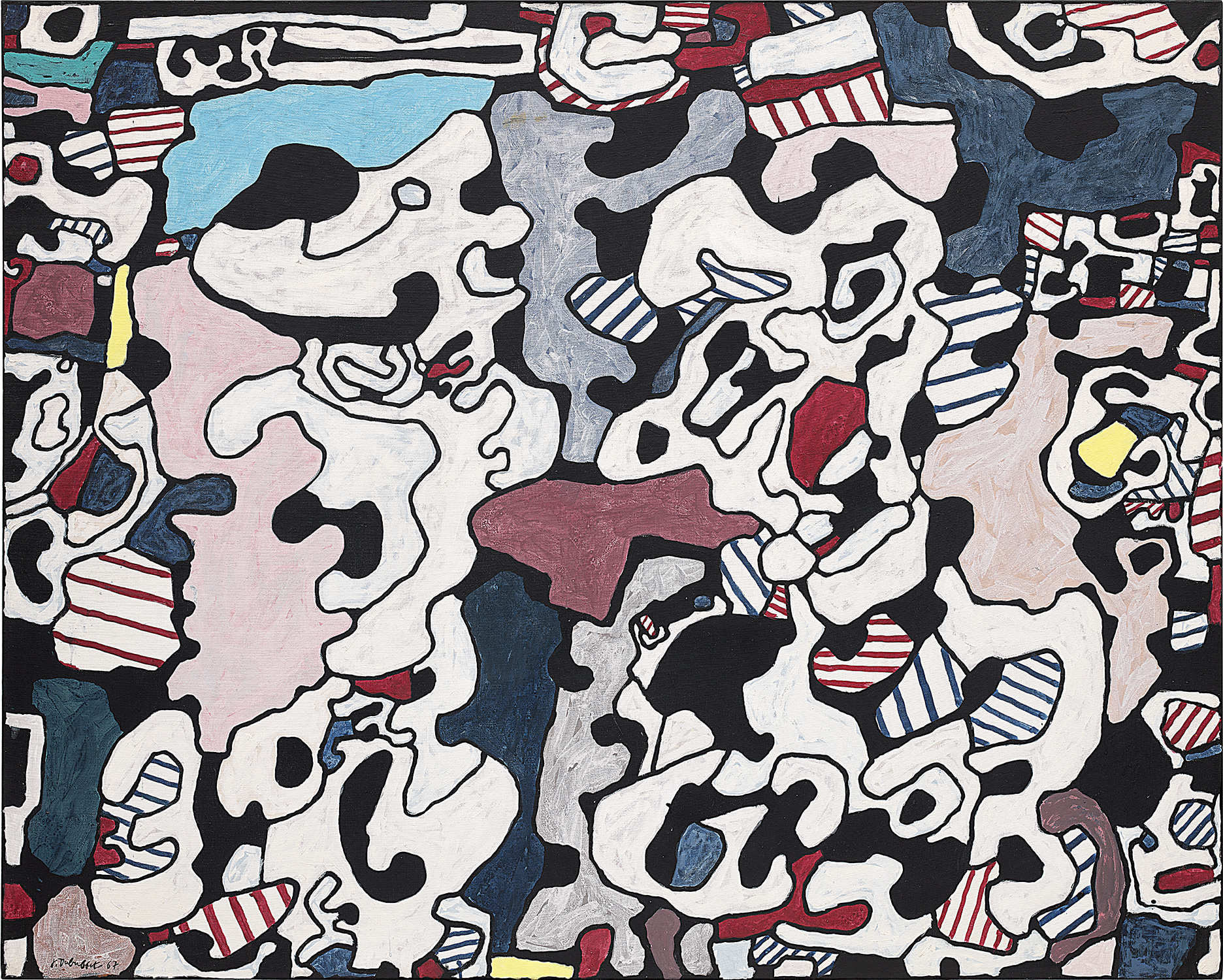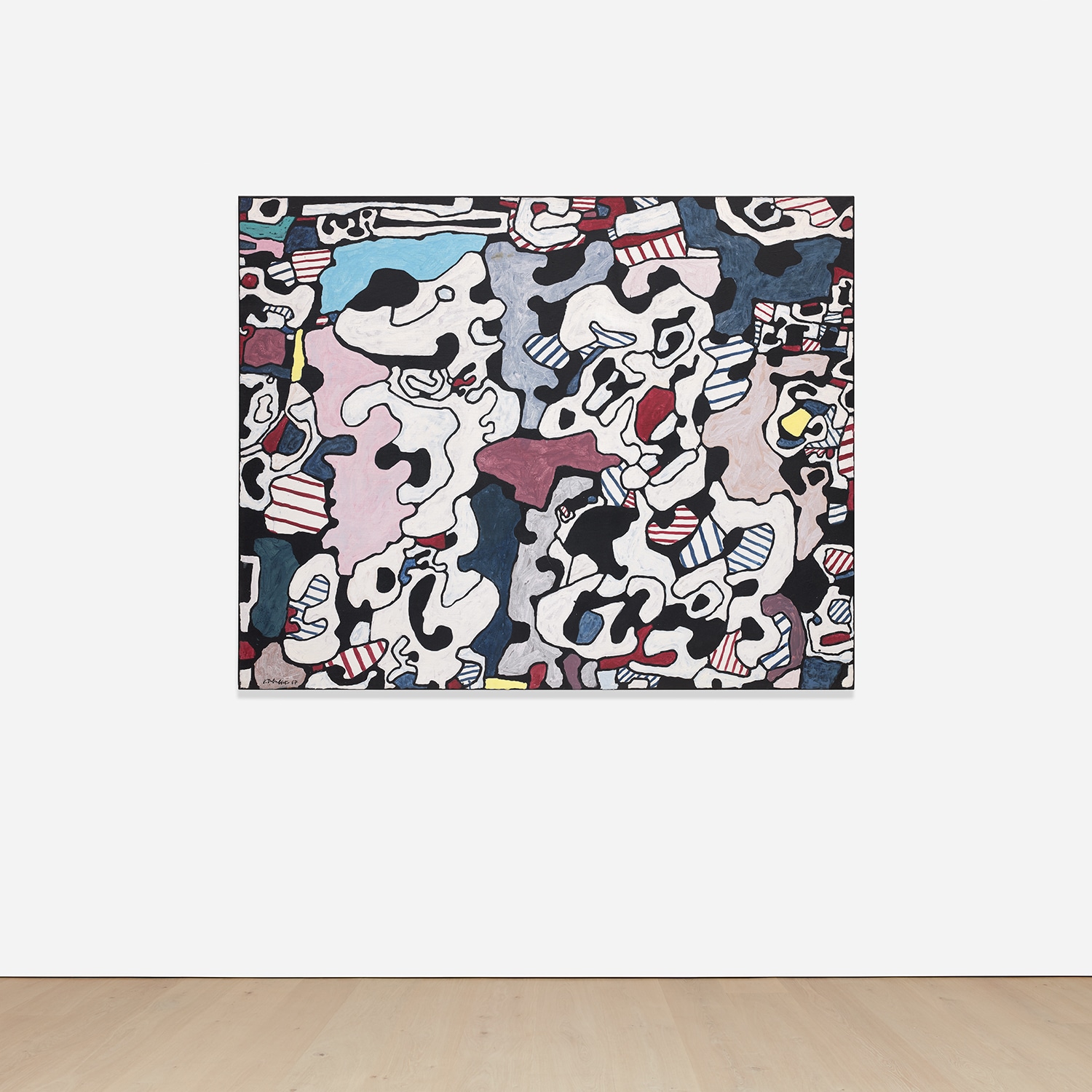



LIVING THE AVANT-GARDE: THE TRITON COLLECTION FOUNDATION
8
Jean Dubuffet
Inspecteurs Sinoque et Dingue
signed and dated "J. Dubuffet 67" lower left; signed, titled and dated "Inspecteurs Sinoque et Dingue J. Dubuffet janvier 67" on the reverse
acrylic on canvas
51 1/8 x 63 7/8 in. (129.9 x 162.2 cm)
Painted on January 23, 1967.